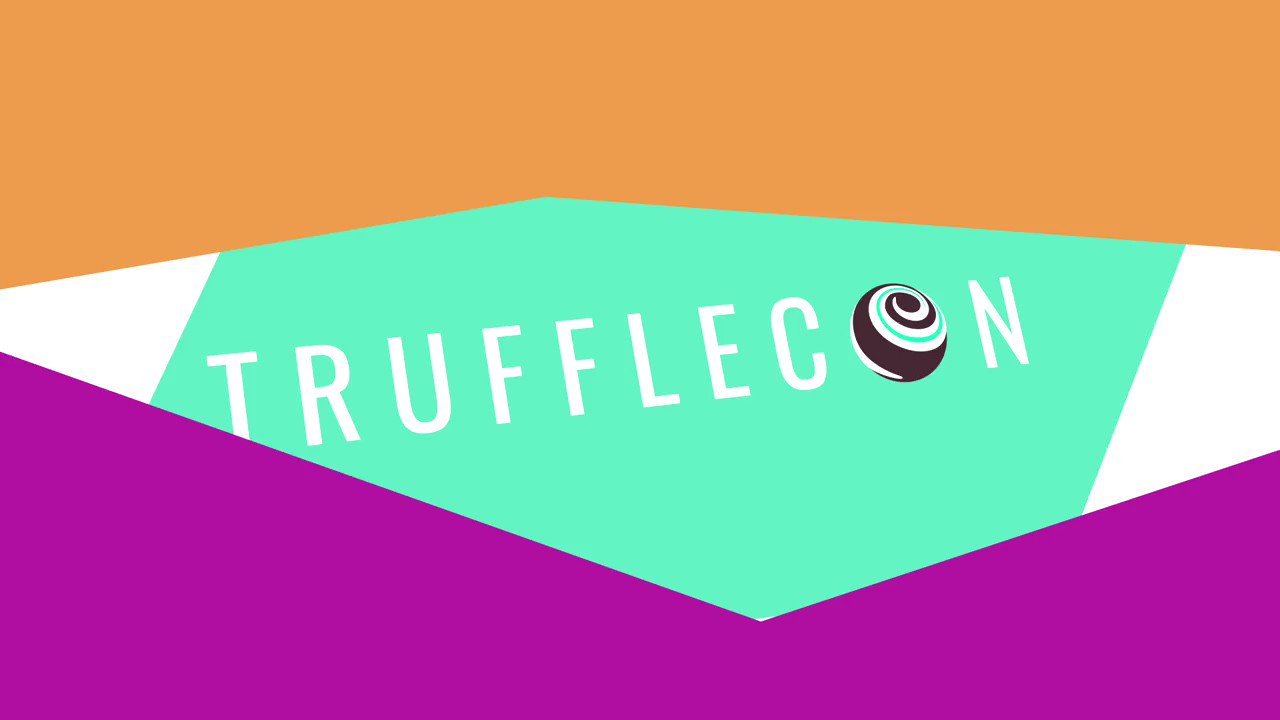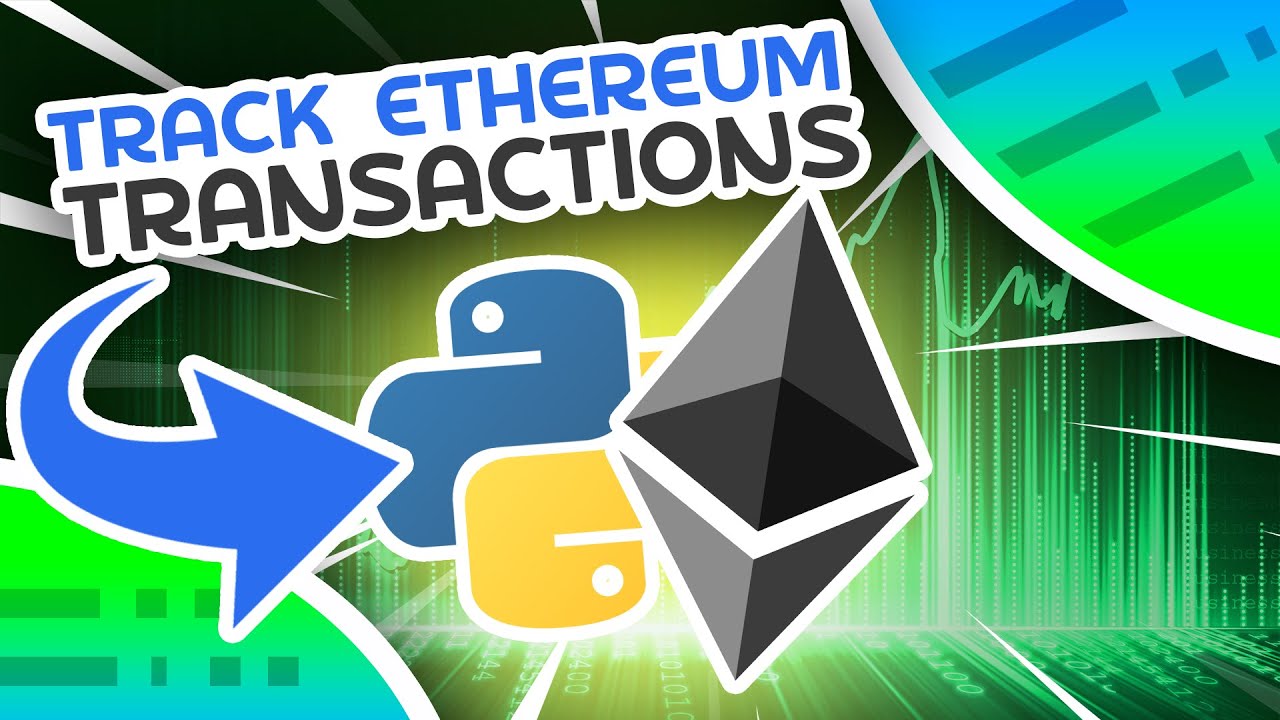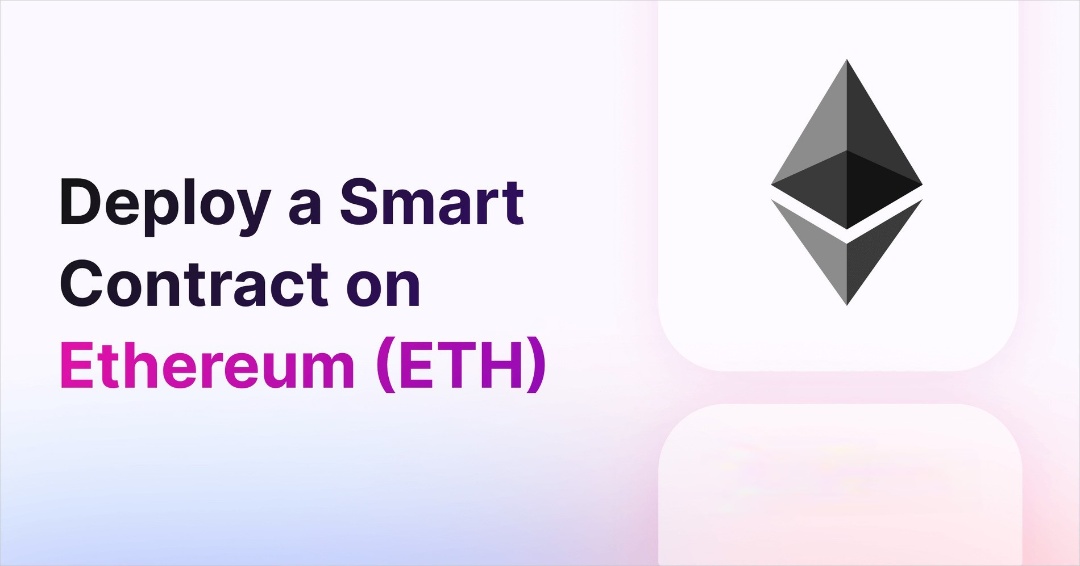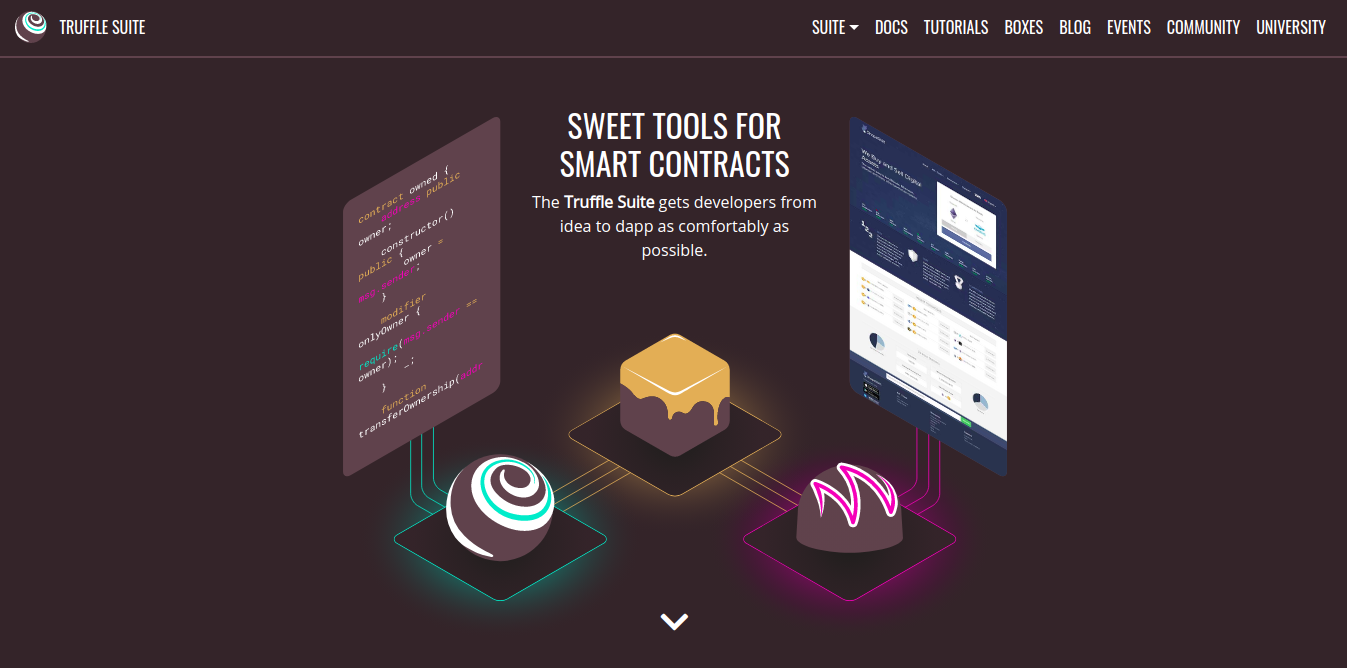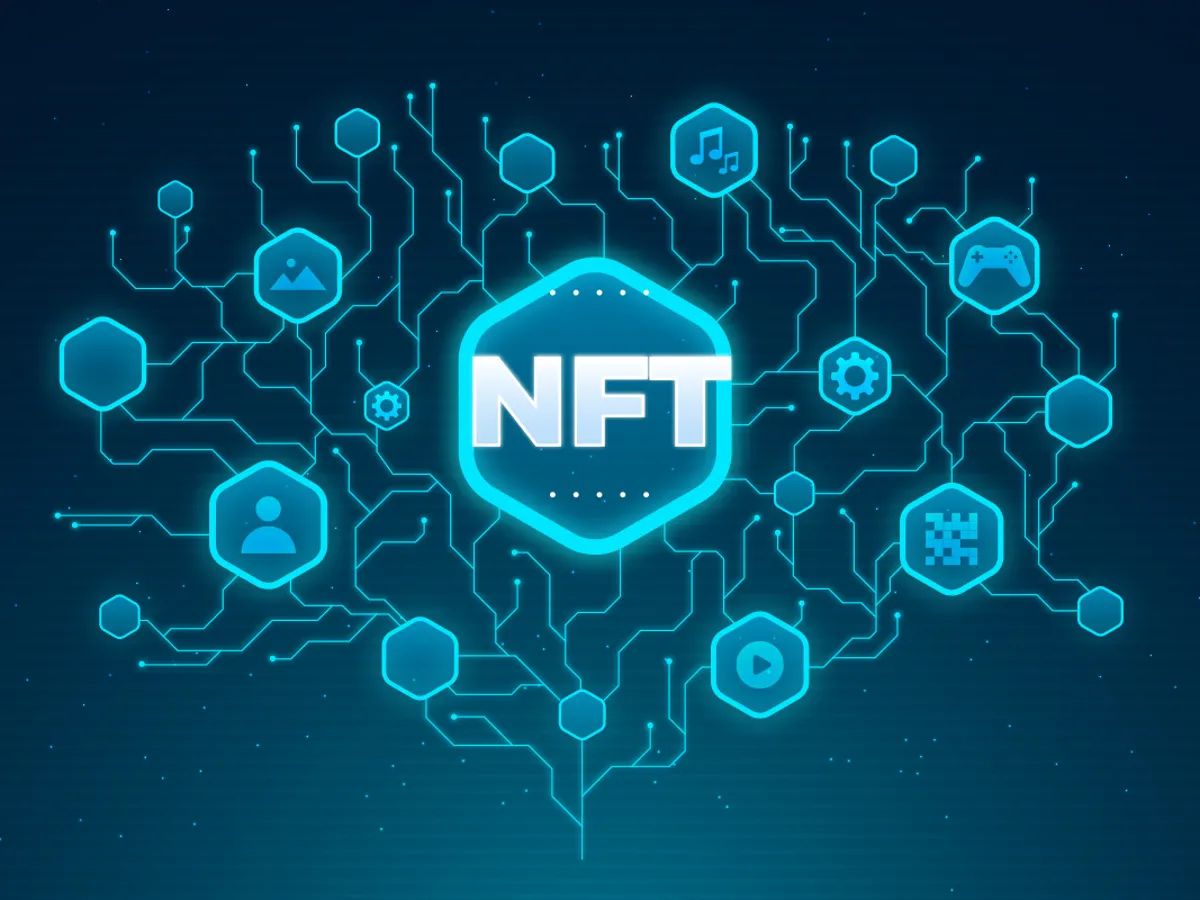Introduction
Welcome to the world of Truffle Ethereum! Whether you’re a seasoned blockchain developer or just getting started, Truffle Ethereum is an invaluable tool that streamlines the process of building and deploying Ethereum smart contracts. In this guide, we’ll take a deep dive into the world of Truffle Ethereum and explore its capabilities, features, and benefits.
Truffle Ethereum is a development framework that allows developers to build decentralized applications (DApps) on the Ethereum blockchain with ease. It provides a suite of tools and libraries that simplify the process of creating, testing, and deploying smart contracts. Truffle offers a comprehensive set of features that make development more efficient, including smart contract compilation, contract migration, test automation, and much more.
So, why should you choose Truffle Ethereum for your blockchain development needs? There are several compelling reasons. Firstly, Truffle offers a user-friendly and intuitive interface that simplifies the complex process of smart contract development. With its clear and concise command line interface (CLI), even developers with limited blockchain experience can quickly get up to speed.
Secondly, Truffle comes equipped with a powerful testing framework that allows developers to write comprehensive test scripts for their smart contracts. With Truffle, you can easily implement unit tests, integration tests, and even automated end-to-end tests to ensure the robustness and accuracy of your smart contracts.
Thirdly, Truffle offers seamless integration with popular development tools and libraries such as Web3.js, Ganache, and Metamask. This integration enables developers to interact with their smart contracts through front-end applications, making it easier to build decentralized applications that can be accessed by end-users.
Lastly, Truffle Ethereum provides exceptional debugging capabilities, making it easier to identify and fix issues in your smart contract code. Truffle’s integrated debugger allows developers to step through their smart contract code line by line, inspect variables, and track the flow of execution.
In this guide, we will walk you through the process of setting up Truffle Ethereum, writing smart contracts, compiling and deploying them, interacting with the contracts, writing tests, and leveraging advanced features like local blockchains and external networks. By the end of this guide, you’ll have a solid understanding of how to utilize Truffle Ethereum to develop robust and secure decentralized applications on the Ethereum blockchain.
What is Truffle Ethereum?
Truffle Ethereum is a powerful development framework and a suite of tools that simplifies the process of building decentralized applications (DApps) on the Ethereum blockchain. It provides a comprehensive set of features that enable developers to create, test, and deploy smart contracts with ease.
At its core, Truffle Ethereum provides a command line interface (CLI) that allows developers to interact with their smart contracts and manage the development workflow. It supports the Solidity programming language, which is widely used for writing smart contracts on the Ethereum platform.
Truffle Ethereum comes equipped with a variety of tools and libraries that serve different purposes throughout the development process. One of the key components is the Truffle Suite, which includes Truffle Core, Truffle Debugger, and Truffle Migrate.
Truffle Core is responsible for compiling and managing smart contracts. It provides a development environment where you can write, deploy, and interact with your contracts. It also offers built-in support for debugging, testing, and migrations.
The Truffle Debugger is a powerful tool that allows developers to step through their smart contract code and debug any issues they encounter. It provides an interactive interface where you can inspect variables, execute functions, and track the flow of execution.
Truffle Migrate is a feature that automates the deployment of smart contracts to the Ethereum blockchain. It keeps track of the contract’s state and allows for easy upgrades and migrations of contracts as your DApp evolves.
In addition to these core components, Truffle Ethereum integrates seamlessly with other popular development tools and libraries. It works hand-in-hand with Ganache, a personal blockchain for Ethereum development, allowing developers to create a local blockchain for testing and debugging their applications.
Truffle Ethereum also integrates with Web3.js, a JavaScript library for interacting with the Ethereum blockchain. This integration enables developers to build front-end applications that interact with their smart contracts, making it easier to create user-friendly and intuitive DApps.
The power of Truffle Ethereum lies in its ability to streamline the development process, providing developers with a robust and efficient framework for building decentralized applications on the Ethereum blockchain. Its comprehensive set of tools and libraries make it an essential tool for anyone looking to dive into blockchain development.
Why Use Truffle Ethereum?
When it comes to developing decentralized applications (DApps) on the Ethereum blockchain, Truffle Ethereum is the go-to development framework for several compelling reasons.
First and foremost, Truffle Ethereum offers a seamless and user-friendly experience for developers. With its intuitive command-line interface (CLI), developers can quickly get started with building smart contracts without being overwhelmed by the complexities of blockchain development. Truffle’s simplicity and ease of use make it accessible to both experienced developers and those new to the Ethereum ecosystem.
Another reason to use Truffle Ethereum is its comprehensive suite of tools and libraries. Truffle comes equipped with everything you need to successfully develop, test, and deploy your smart contracts. From compiling and deploying contracts to writing and running tests, Truffle provides a streamlined workflow that saves you time and effort.
Truffle Ethereum’s testing framework is especially noteworthy. It allows you to write comprehensive test scripts to ensure the robustness and accuracy of your smart contracts. By automating the testing process, Truffle increases the reliability of your DApp code, reducing the risk of vulnerabilities and bugs.
Furthermore, Truffle Ethereum seamlessly integrates with other popular development tools and libraries, such as Web3.js, Ganache, and Metamask. This integration makes it easier to interact with your smart contracts through front-end applications, resulting in a more user-friendly and intuitive experience for end-users.
Truffle Ethereum also excels in its debugging capabilities. Its built-in debugger facilitates the identification and resolution of issues in your smart contract code. With the ability to step through the code line by line, inspect variables, and track the flow of execution, Truffle empowers developers to quickly diagnose and fix bugs.
Moreover, Truffle Ethereum supports both local and external blockchain networks. With Truffle Develop, you can create a local blockchain for testing and development purposes, removing the need for a live network during the early stages. Truffle also allows you to seamlessly deploy and interact with your smart contracts on external networks, providing flexibility and scalability for your DApp deployment.
Overall, Truffle Ethereum offers a powerful and comprehensive development framework for building DApps on the Ethereum blockchain. Its user-friendly interface, extensive set of tools, seamless integrations, robust testing framework, and efficient debugging capabilities make it the ideal choice for developers looking to harness the full potential of blockchain technology.
Prerequisites
Before you dive into using Truffle Ethereum, there are a few prerequisites you should be aware of. While Truffle simplifies the development process, having a basic understanding of blockchain concepts and Ethereum is beneficial for a smoother experience.
Firstly, you should have a good grasp of the Ethereum blockchain and how it functions. Familiarize yourself with the basics of Ethereum, such as smart contracts, gas fees, and Ethereum addresses. Understanding these concepts will help you grasp the core principles that Truffle Ethereum builds upon.
Secondly, it is essential to have a solid understanding of the Solidity programming language. Truffle Ethereum relies on Solidity as the primary language for writing smart contracts. Familiarize yourself with Solidity’s syntax, data types, control structures, and functions. This knowledge will enable you to write efficient and secure smart contracts using Truffle.
Thirdly, a working knowledge of JavaScript is highly recommended since Truffle Ethereum interacts with smart contracts using the Web3.js library, which is based on JavaScript. Having a familiarity with JavaScript concepts, such as variables, functions, and objects, will facilitate the integration of Truffle Ethereum into your front-end applications.
Additionally, you will need to have a compatible operating system (Windows, macOS, or Linux) and a text editor or integrated development environment (IDE) for writing and editing your code. Popular choices include Visual Studio Code, Atom, and Sublime Text, but you are free to use any editor that you are comfortable with.
If you wish to deploy and interact with your smart contracts on a local blockchain, you will need to have Ganache installed. Ganache provides a personal Ethereum environment that simulates the behavior of the Ethereum network. It enables you to test and debug your smart contracts in a controlled environment without incurring any real transactions or gas fees.
Lastly, make sure you have Node.js and npm (Node Package Manager) installed on your system. Truffle Ethereum relies on these tools for its installation and managing dependencies. Node.js is a JavaScript runtime environment, and npm is a package manager that allows you to easily install and manage libraries and packages required by Truffle.
By meeting these prerequisites, you will be well-prepared to explore Truffle Ethereum and unlock its full potential in developing decentralized applications on the Ethereum blockchain.
Installing Truffle
Installing Truffle is a straightforward process and can be done using npm (Node Package Manager), which comes bundled with Node.js. Follow the steps below to install Truffle on your system:
- Make sure you have Node.js installed. You can check if Node.js is already installed by running the command
node -vin your terminal. If it is not installed, visit the official Node.js website and download the latest version for your operating system. - Once you have Node.js installed, open your terminal or command prompt and run the following command to install Truffle globally:
npm install -g truffle- Wait for the installation process to complete. This may take a few minutes, depending on your internet connection speed.
- Once the installation is finished, you can verify that Truffle has been installed correctly by running the following command:
truffle versionIf Truffle has been installed successfully, you will see the Truffle version number and other relevant information displayed in the terminal.
That’s it! Truffle is now installed on your system and ready to use. You can now proceed to set up a new Truffle project and start building your Ethereum decentralized applications.
Note that if you encounter any errors during the installation process, make sure your system meets the prerequisites mentioned earlier. It is also recommended to update npm to the latest version by running npm install -g npm before installing Truffle.
Installing Truffle globally allows you to use the Truffle command-line interface (CLI) from anywhere on your system. If you prefer to install Truffle locally within a specific project directory, you can run npm install truffle without the -g flag.
With Truffle successfully installed, you are now one step closer to harnessing its powerful features and capabilities for Ethereum smart contract development.
Setting Up a New Truffle Project
Once you have Truffle installed on your system, setting up a new Truffle project is a breeze. Truffle comes with a handy command-line interface (CLI) that automates the project setup process and initializes the necessary files and directories.
Follow the steps below to set up a new Truffle project:
- Open your terminal or command prompt and navigate to the directory where you want to create your Truffle project.
- Run the following command to create a new Truffle project:
truffle initThis command initializes a new Truffle project with the default directory structure and configuration files.
Upon successful execution, you will see a message indicating that the project has been initialized, and the necessary files and directories have been created.
The default Truffle project structure includes the following files and directories:
contracts/: This directory is where you will write your Solidity smart contracts. Truffle starts you off with a sample contract namedMigrations.sol.migrations/: This directory contains the migration scripts that handle the deployment of your smart contracts to the Ethereum blockchain.test/: This directory is where you write your automated testing scripts for your smart contracts.truffle-config.js(ortruffle.js): This is the main configuration file for your Truffle project. It specifies various settings and options for running Truffle commands.
With your new Truffle project created, you can now start writing your smart contracts, compiling them, and deploying them to the Ethereum blockchain.
Feel free to customize the project structure and configuration files to suit your development needs. Truffle provides flexibility to add additional directories, libraries, and configurations as your project evolves.
Remember to refer to the official Truffle documentation for more in-depth information about project setup and configuration options. The documentation covers advanced topics such as customizing build environments, configuring network connections, and utilizing advanced features to enhance your Ethereum development workflow.
Now that your Truffle project is set up, you are ready to embark on your journey of Ethereum smart contract development!
Understanding the Truffle Project Structure
When you create a new Truffle project using the truffle init command, it sets up a specific directory structure and creates essential files to organize your smart contract development workflow. Understanding this project structure is crucial for efficiently managing your Truffle projects.
Here’s an overview of the Truffle project structure:
contracts/: This directory is where you store your Solidity smart contract files. By default, Truffle initializes your project with a sample contract namedMigrations.sol. You can create additional contract files in this directory and import them into your main contract files as needed.migrations/: The migrations directory contains the deployment scripts for your smart contracts. Each migration script corresponds to a different version or stage of your project’s development. These scripts are executed in order to deploy your contracts to the Ethereum blockchain. TheMigrations.solcontract in the contracts directory is a standard contract used by Truffle to track the migrations.test/: This directory is where you write automated tests for your smart contracts. Truffle uses the Mocha testing framework for testing contracts. You can create test files in this directory to ensure the correctness and reliability of your contracts.truffle-config.js(ortruffle.js): This is the main configuration file for your Truffle project. It contains various settings and options that configure how Truffle interacts with your project. You can specify network configurations, compiler versions, and other project-specific settings in this file.build/: This directory is automatically created when you compile your contracts using thetruffle compilecommand. It contains the compiled JSON artifacts of your contracts. These artifacts are used by Truffle to interact with your contract instances once they are deployed.
This basic structure allows for easy organization of your smart contracts, deployment scripts, and tests. It separates concerns and provides a clear and intuitive organization for your Truffle project.
As you progress with your Truffle project, you may find it beneficial to create additional directories to house libraries, dependencies, or configuration files specific to your project’s needs. Truffle provides flexibility to customize the project structure according to your requirements.
Understanding the Truffle project structure empowers you to efficiently navigate and manage your project’s codebase. It simplifies collaboration with other developers and ensures a well-organized and maintainable codebase for your Ethereum smart contract development.
Writing Smart Contracts with Truffle
Truffle provides a robust environment and toolset for writing smart contracts using the Solidity programming language. The process of writing smart contracts with Truffle involves creating new contract files, defining contract logic, and implementing contract functions and variables.
Follow these steps to write smart contracts with Truffle:
- Navigate to the
contracts/directory in your Truffle project. - Create a new Solidity contract file with a
.solextension. For example, you can create a file namedMyContract.sol. - Open the contract file in a text editor or integrated development environment (IDE).
- Define your contract using the Solidity syntax. Specify the contract’s name, inheritance, and state variables.
- Implement the desired contract functions by defining their names, input parameters, return types, and logic. You can also add modifiers to restrict access or define event triggers for contract events.
- Save the contract file.
- Repeat the above steps to create additional contract files as needed.
When writing smart contracts with Truffle, you have access to the full features and capabilities of the Solidity language. You can define complex data structures, utilize control flow statements, and leverage the extensive library of built-in Solidity functions.
Truffle also provides helpful extensions and syntax highlighting for Solidity in popular code editors like Visual Studio Code, making it easier to write and maintain your smart contract code.
It is recommended to follow best practices for writing secure and efficient smart contracts. This includes proper use of visibility modifiers, avoiding unnecessary storage operations, and employing error handling techniques. Truffle provides extensive documentation and resources on writing secure Solidity code, which you can refer to for guidance.
Once you have written your smart contracts, you can proceed to compile and deploy them using Truffle’s built-in functionalities. Truffle’s compilation process generates JSON artifacts for each contract, which are used for deployment and interaction with your contracts on the Ethereum blockchain.
Writing smart contracts with Truffle opens up a world of possibilities for creating decentralized applications on the Ethereum blockchain. With a solid understanding of Solidity and Truffle’s development environment, you can unleash the power of smart contracts to build innovative and secure blockchain-based solutions.
Compiling Smart Contracts
Compiling smart contracts is a crucial step in the development process, as it translates the human-readable Solidity code into machine-readable bytecode that can be executed on the Ethereum Virtual Machine (EVM). Truffle provides a straightforward compilation process that automates this step and ensures the accuracy and integrity of your smart contracts.
To compile smart contracts with Truffle, follow these steps:
- Ensure you are in the root directory of your Truffle project in your terminal or command prompt.
- Execute the following command to trigger the compilation process:
truffle compileTruffle will scan the contracts/ directory for Solidity files and compile them one by one. The compilation output will be displayed in the terminal, showing the contract name, bytecode, and other relevant information.
By default, Truffle uses the Solidity compiler specified in the project’s truffle-config.js (or truffle.js) configuration file. However, you can override this setting by using compiler-specific configurations, such as compiler optimization and version selection.
Once the compilation process is complete, Truffle generates JSON artifact files for each compiled contract. These artifacts, located in the build/contracts/ directory, contain information about the contract’s ABI (Application Binary Interface), bytecode, and other metadata. These artifacts are essential for deploying and interacting with your contracts.
It’s important to note that Truffle automatically triggers contract recompilation when you make changes to your Solidity files. This ensures that your contracts are always up to date and ready for deployment.
In addition to the default compilation process, Truffle supports other specialized compilers, such as the Solidity optimizer, which reduces bytecode size and improves performance. You can configure these advanced compiler options in the truffle-config.js (or truffle.js) file to fine-tune your contract compilation settings.
Compiling smart contracts with Truffle is a straightforward and essential step in the development workflow. It ensures that your contracts are accurately translated into bytecode and prepares them for deployment to the Ethereum blockchain.
Deploying Smart Contracts
Deploying smart contracts is a crucial step in bringing your decentralized applications to life on the Ethereum blockchain. Truffle provides a streamlined process for deploying your contracts, making it simple and efficient to unleash the power of your smart contract functionality.
To deploy smart contracts with Truffle, follow these steps:
- Ensure you are in the root directory of your Truffle project in your terminal or command prompt.
- Make sure you have a network specified in your
truffle-config.js(ortruffle.js) configuration file. You can configure networks for development, testing, and production environments, each with their own Ethereum provider. - Compile your smart contracts using the
truffle compilecommand to generate the necessary artifacts for deployment. - Execute the following command to deploy your contracts:
truffle migrateTruffle will search for migration scripts in the migrations/ directory and execute them in order. Migration scripts are JavaScript files that define the deployment process for your contracts.
By default, Truffle maintains a migration history, ensuring that only new or modified contracts are deployed. This prevents unnecessary redeployment of contracts that have not changed since the last deployment. Truffle stores the migration history in a specific contract named Migrations.
Truffle also supports contract upgrades and re-deployments. By creating new migration scripts, you can specify the desired behavior for upgrading or replacing existing contracts.
During the deployment process, Truffle will interact with the specified network’s Ethereum provider to create transactions and deploy your contracts. Once the deployment is successful, Truffle will log the transaction details and provide you with contract addresses on the Ethereum network.
To deploy contracts to a specific network, you can use the --network flag followed by the network name. For example, truffle migrate --network development will deploy contracts to the development network.
Truffle also allows you to deploy contracts to multiple networks simultaneously. By specifying multiple network configurations in the truffle-config.js (or truffle.js) file, you can deploy contracts to separate networks with a single migration command.
Deploying smart contracts with Truffle simplifies the process and ensures that your contracts are readily available for interaction on the Ethereum blockchain. It provides a structured and efficient approach to deploying and managing your decentralized applications.
Interacting with Smart Contracts
Once you have deployed your smart contracts to the Ethereum blockchain using Truffle, the next step is to interact with them. Truffle provides a convenient and powerful set of tools and libraries that enable seamless interaction with your deployed contracts, allowing you to retrieve data, perform transactions, and interact with contract functions and variables.
Here’s how you can interact with smart contracts using Truffle:
- Ensure you are in the root directory of your Truffle project in your terminal or command prompt.
- Compile your contracts if you haven’t done so already using the
truffle compilecommand. This ensures that your contract artifacts are up to date. - Execute the following command to launch the Truffle console:
truffle consoleThe Truffle console provides an interactive environment for interacting with your deployed contracts through JavaScript commands.
Inside the Truffle console, you can:
- Retrieve deployed contract instances by their contract name, which is specified in the contract’s Solidity file. For example, if you have a contract named
MyContract, you can access its deployed instance usingMyContract.deployed(). - Call contract functions and retrieve their return values. For example, if your contract has a function named
getValue(), you can invoke it usingMyContract.deployed().then(instance => instance.getValue()). - Send transactions to modify contract state. For example, if your contract has a function named
setValue()that updates a state variable, you can invoke it usingMyContract.deployed().then(instance => instance.setValue(newValue, { from: account }), wherenewValueis the new value you want to set andaccountis the Ethereum account used to send the transaction. - Access and modify contract variables directly.
Truffle also provides a Web3.js instance that you can use for more advanced interactions with the Ethereum blockchain. The Web3.js library enables you to perform low-level operations, such as retrieving account balances, listening to events emitted by your contracts, and interacting with external contracts.
By combining the Truffle console and Web3.js, you have a powerful toolkit for interacting with your deployed smart contracts and building sophisticated decentralized applications.
Interacting with smart contracts using Truffle allows you to test and validate the functionality of your contracts, retrieve and update contract state, and integrate your contracts into front-end applications and other systems.
Remember to refer to the Truffle documentation and resources for more in-depth information on interacting with smart contracts and utilizing advanced features for Ethereum development.
Writing Tests for Smart Contracts
Testing smart contracts is vital to ensuring their reliability and correctness. Truffle provides a comprehensive testing framework that allows you to write automated tests to validate the behavior and functionality of your smart contracts.
Here’s a step-by-step guide on how to write tests for smart contracts using Truffle:
- In your Truffle project directory, navigate to the
test/directory. - Create a new JavaScript test file with a descriptive name, such as
MyContract.test.js. - Open the test file in a text editor or integrated development environment (IDE).
- Import necessary dependencies, such as Truffle’s assertion library
assertand any contract artifacts you need to interact with. - Write individual test cases using the
itfunction provided by the testing framework. For example, you can useit('should return true', async () => { ... }). - Within each test case, interact with your deployed contracts, invoke contract functions, and assert expected outcomes using the
assertlibrary methods. - Execute the tests by running the command
truffle testin your terminal or command prompt.
Truffle’s testing framework is built on top of Mocha, a popular JavaScript testing framework, and includes additional features tailored specifically for testing smart contracts. It provides utilities for contract deployment, asynchronous testing, event handling, and more.
When writing tests, consider various scenarios and edge cases to ensure that your contracts behave as expected in different situations. Test input validation, contract state changes, event emissions, edge parameter values, and interaction with other contracts.
Truffle’s testing framework also supports the concept of test-driven development (TDD), where you write tests first before implementing the corresponding contract functionality. This approach helps ensure that all contract behaviors are thoroughly tested and that the contract code meets the specified requirements.
Running the tests with truffle test will execute the test cases and provide detailed output about the test results, including any failures or errors encountered. This feedback is essential for identifying issues and verifying the integrity of your contract code.
By incorporating thorough automated testing into your development workflow, you can improve the reliability, security, and correctness of your smart contracts, reducing the likelihood of vulnerabilities and bugs.
Truffle’s testing framework simplifies the process of writing and executing tests for your smart contracts, enabling you to confidently deploy and use your contracts on the Ethereum blockchain.
Running Tests with Truffle
Once you have written tests for your smart contracts using Truffle’s testing framework, it’s time to execute them and validate the behavior of your contracts. Truffle provides a straightforward process for running your tests, helping you ensure the reliability and correctness of your smart contracts.
Here’s how you can run tests with Truffle:
- Make sure you are in the root directory of your Truffle project in your terminal or command prompt.
- Execute the following command to run your tests:
truffle testTruffle will automatically search for and execute the test files located in the test/ directory of your project. It will run each test case defined within the test files and provide detailed output about the test results.
Truffle’s testing framework, built on Mocha and Chai, provides a wide range of assertion methods and testing utilities to help you write effective tests. You can use these utilities to compare values, validate contract state changes, handle asynchronous code, and more.
The results of your tests will be displayed in the terminal, indicating the number of passing and failing test cases. If any tests fail, Truffle will provide relevant error messages and stack traces to help you identify and debug the issues.
Truffle’s testing framework also supports options for running specific test files or test cases, allowing you to focus on specific areas of your contracts. For example, you can use the --grep flag followed by a regular expression to filter and execute specific test cases based on their descriptions.
Running tests with Truffle is an essential part of your development workflow, providing confidence in the functionality and reliability of your smart contracts. By thoroughly testing your contracts, you can identify and rectify any issues before deploying them to the Ethereum blockchain.
Remember to regularly run your tests, especially after making changes or adding new functionality to your contracts. This ensures that your contracts continue to function as intended and helps catch any regressions introduced during the development process.
Truffle’s testing framework simplifies the process of running tests for your smart contracts, making it easier to validate the behavior of your contracts and ensure their correctness and reliability.
Truffle Develop: A Local Blockchain
Truffle Develop is a built-in feature of Truffle that allows you to create and interact with a local blockchain environment for development and testing purposes. It provides a private Ethereum network that you can use to deploy and test your smart contracts without incurring any gas fees or impacting the public Ethereum network.
Here’s how you can use Truffle Develop to set up a local blockchain:
- In your Truffle project directory, open your terminal or command prompt.
- Execute the following command to launch the Truffle Develop console and start the local blockchain:
truffle developTruffle will open the Truffle Develop console, where you can interact with your local blockchain and deploy your smart contracts.
Within the Truffle Develop console, you have access to a set of development accounts, automatically generated for you, each with a predefined balance of test Ether (ETH) for testing and experimentation.
Some of the key features and capabilities of Truffle Develop include:
- Automatic mining: Truffle Develop automatically mines new blocks, allowing you to see the confirmations and interactions with your contracts quickly.
- Deploying contracts: You can deploy your smart contracts to the local blockchain using Truffle’s migration scripts. This allows you to test the deployment process and interactions between contracts.
- Interacting with contracts: Once deployed, you can interact with your contracts through the Truffle Develop console. You can call functions, retrieve contract state, and send transactions to modify the state.
- Accessing accounts: Truffle Develop provides a list of preconfigured accounts, complete with private keys and test Ether balances. You can use these accounts to simulate different user roles and test scenarios.
- Debugging support: Truffle Develop supports debugging capabilities similar to what is available on the live Ethereum network. You can set breakpoints, step through your contract code, and inspect variables.
The local blockchain environment provided by Truffle Develop is an invaluable tool for testing and debugging your smart contracts. It allows you to simulate different scenarios, verify contract behavior, and ensure the integrity and security of your contracts before deploying them to the live Ethereum network.
Truffle Develop is a powerful feature that accelerates the development process and helps identify and fix issues early on. It provides a controlled environment where you can experiment, iterate, and refine your smart contract code in a private and secure manner.
Using Truffle with External Blockchain Networks
In addition to the local blockchain provided by Truffle Develop, Truffle offers seamless integration with external Ethereum networks. This allows you to deploy your smart contracts and interact with external networks such as the main Ethereum network (referred to as the “mainnet”), test networks like Ropsten and Rinkeby, or private blockchain networks.
Here’s how you can use Truffle with external blockchain networks:
- Ensure you are in the root directory of your Truffle project in your terminal or command prompt.
- Open your
truffle-config.js(ortruffle.js) configuration file in a text editor. - Specify the network you want to deploy your contracts to by modifying the
networksconfiguration section. Each network configuration should include details such as the network’s provider URL, account credentials, gas price, and other deployment-specific parameters. - Save the configuration file.
- Compile your contracts if you haven’t done so already using the
truffle compilecommand. - Execute the following command to deploy your contracts to the specified network:
truffle migrate --network <network_name>Replace <network_name> with the name of the network you specified in the configuration file.
Truffle will connect to the specified network’s Ethereum provider and deploy your contracts to that network. It will create transactions, pay gas fees, and interact with the network just as it would with the Truffle Develop’s local blockchain.
Once your contracts are deployed to an external network, you can interact with them using the same techniques described earlier. Truffle provides a consistent interface for interacting with contracts, regardless of the underlying network.
Using Truffle with external blockchain networks is ideal for deploying your contracts to production environments, collaborating with other developers, and testing your contracts under real-world conditions. It allows you to leverage the security and stability of established networks or create private networks tailored to your specific needs.
Take advantage of Truffle’s flexibility and compatibility with external blockchain networks to finalize your project and bring your decentralized application to a wider user base.
Integrating with Web3.js and Front-End Applications
Integrating Truffle with Web3.js and front-end applications is crucial for creating user-friendly and interactive decentralized applications (DApps). Web3.js is a JavaScript library that allows you to interact with the Ethereum blockchain, making it the perfect companion to Truffle for building front-end interfaces that communicate with your smart contracts.
Here’s how you can integrate Truffle with Web3.js and front-end applications:
- Ensure you have Web3.js installed as a dependency in your project. You can install it using npm by running the command
npm install web3. - In your front-end application code, import the Web3.js library and create an instance of the Web3 object. You can connect to the Ethereum network by specifying the provider URL, which can be obtained from your Truffle project’s configuration file.
- Use the web3 object to interact with your deployed contracts. You can access the contract artifacts generated by Truffle’s compilation process and create contract instances that correspond to your deployed contracts. These instances allow you to call contract functions, retrieve contract variables, and send transactions.
- Integrate the web3 object with your front-end application’s user interface. You can expose contract functionality through buttons, forms, or other UI elements, and call the corresponding contract functions when interacting with these elements.
- Utilize event listeners to listen for events emitted by your smart contracts and update your front-end application’s UI accordingly. Web3.js allows you to subscribe to contract events and trigger actions in response to specific events.
- Implement error handling and display informative messages in case of contract function failures or transaction rejections.
- Compile and build your front-end application, ensuring that the Web3.js library and any other dependencies are included in the final build.
By integrating Truffle with Web3.js and front-end applications, you can provide a seamless user experience, enabling users to interact with your smart contracts directly through a user-friendly interface.
Truffle’s integration with Web3.js allows you to leverage the full suite of Web3.js functionalities, such as account management, transaction signing, and interacting with external contracts. This opens up endless possibilities for creating dynamic and interactive DApps that can be accessed by users around the world.
Remember to thoroughly test your front-end application and ensure the security and integrity of your contract interactions. Utilize best practices for user input validation, secure account management, and contract function invocations.
Integrating Truffle with Web3.js and front-end applications enables you to bridge the gap between your smart contracts and the end-users, creating a rich and immersive user experience for your decentralized application.
Debugging Smart Contracts
Debugging smart contracts is a crucial part of smart contract development to ensure the correctness and reliability of your code. Truffle provides a built-in debugger that allows you to step through your smart contract code, inspect variables, and identify and resolve issues effectively.
Here’s how you can debug smart contracts with Truffle:
- Make sure you have enabled debug mode in your Truffle project’s configuration file,
truffle-config.js(ortruffle.js). Set thedebugproperty totrue. This will activate the debugger when running Truffle commands. - Compile your smart contracts using the
truffle compilecommand to ensure that the compiled contracts contain the necessary debug information. - Deploy your contracts using the
truffle migratecommand. - Launch the Truffle debugger by executing the following command:
truffle debug <contract_name>Replace <contract_name> with the name of the contract you want to debug, as specified in the contract’s Solidity file.
The Truffle debugger will start, and you will be presented with a command-line interface where you can interact with the debugger.
Some of the key commands you can use in the Truffle debugger include:
nextorn: Proceed to the next line of code.stepors: Step into function calls.outoro: Step out of the current function.print <variable>orp <variable>: Print the value of a variable.continueorc: Resume execution until the next breakpoint or contract completion.
As you step through the code, you can observe the current state of the variables, analyze their values, and evaluate the flow of your smart contract’s execution.
The Truffle debugger provides a powerful environment to identify and resolve issues in your smart contracts, such as incorrect state changes, unexpected behavior, or logical errors. By carefully stepping through the code and examining variable values, you can pinpoint the source of issues and make necessary modifications.
In addition to the Truffle debugger, you can also log events and use console statements in your contract code to track the flow of execution and verify the expected state changes at different stages.
Debugging smart contracts with Truffle empowers you to write reliable and secure code, eliminating potential vulnerabilities and ensuring that your contracts function as intended before deploying them to the Ethereum network.
Migrating Smart Contracts
Migrating smart contracts is an essential step in the Truffle development workflow. Truffle’s migration feature allows you to manage the deployment and upgrade of your smart contracts on the Ethereum blockchain.
Here’s how you can migrate your smart contracts using Truffle:
- In your Truffle project directory, navigate to the
migrations/directory. - Create a new JavaScript migration file with a descriptive name, such as
2_deploy_contracts.js. - Open the migration file in a text editor or integrated development environment (IDE).
- Define the migration script by using the Truffle migration API. The migration script should specify the contract(s) to be deployed, any constructor arguments, and any additional deployment steps or configurations.
- Save the migration file.
- Execute the following command to run the migrations:
truffle migrateTruffle will automatically detect and execute the migration scripts in ascending order based on the file names. It will deploy the specified contracts, record the deployment details, and update the migration history to keep track of the deployed contract versions.
If you have any subsequent changes or upgrades to your contracts, you can add new migration scripts to manage the deployment of the updated contracts. Truffle will ensure that only new or modified contracts are redeployed during subsequent migrations, minimizing redundant deployment and reducing the risk of unintended side effects.
It’s worth noting that Truffle’s migrations use a deterministic ordering based on the migration file names. This helps maintain consistency and predictability in your deployment process. If needed, you can include leading numbers or timestamps in the migration file names to enforce specific execution order, especially when dealing with interdependent contracts.
During migrations, you can specify optional flags to control the behavior. For example, you can use the --reset flag to start the migrations from the beginning, clearing the existing deployment history. This is useful when you want to completely redeploy all contracts without any assumptions about prior deployments.
Truffle’s migration feature simplifies the deployment and upgrade process for your smart contracts. By organizing your migrations and keeping track of the deployment history, you can maintain a reliable and auditable record of your contract deployments on the Ethereum blockchain.
Advanced Truffle Features: Plugins, Scripts, and More
Truffle offers a range of advanced features that enhance the development and deployment process for your decentralized applications (DApps). These features include plugins, scripts, and additional tools that extend Truffle’s functionality and provide further customization options.
Here are some of the advanced features and capabilities of Truffle:
- Plugins: Truffle allows you to extend its functionality by installing and using plugins. Plugins can provide additional functionalities, such as custom deployment scripts, contract verification, code coverage analysis, and debuggers. You can explore the available Truffle plugins and choose the ones that best suit your development needs.
- Custom Scripts: Truffle allows you to create and run your own custom scripts that interact with your contracts and the Ethereum network. Custom scripts can be written in JavaScript and can include various tasks, such as automated testing, contract initialization, or even complex deployment processes. These scripts can be executed using the
truffle execcommand. - Truffle Boxes: Truffle Boxes are pre-packaged project templates that provide a starting point for your DApp development. Boxes include boilerplate code, libraries, and configurations specific to different use cases, such as token issuance, decentralized exchanges, oracles, and more. You can choose a Truffle Box that aligns with your needs and customize it as per your requirements.
- Contract Verification: Truffle provides the capability to verify your smart contracts on public Ethereum blockchain explorers, such as Etherscan. Contract verification ensures the transparency and authenticity of your contracts by allowing others to view the contract’s source code and its deployment details.
- Ethereum Provider Management: Truffle allows you to configure and manage multiple Ethereum providers to connect to different networks. This enables you to seamlessly switch between the Ethereum mainnet, test networks, or private networks by specifying the appropriate provider URL and other network-specific configurations.
- Build and Deployment Configuration: Truffle provides extensive configuration options to fine-tune your build and deployment processes. You can adjust compiler settings, specify gas limits and prices, control network connections, configure contract optimizations, and more through the configuration file (
truffle-config.jsortruffle.js).
By utilizing these advanced features, you can further tailor your Truffle development workflow to suit your specific project requirements. Whether you need custom functionalities, additional tools, or optimizations, Truffle’s extensibility empowers you to enhance your DApp development process.
It is worth exploring the Truffle documentation, community forums, and other resources to discover more advanced features and gain insights from other Truffle users. With these advanced tools at your disposal, you can streamline your DApp development, improve efficiency, and build even more advanced and feature-rich decentralized applications.
Conclusion
Truffle Ethereum is an indispensable development framework for building decentralized applications (DApps) on the Ethereum blockchain. With its suite of tools, intuitive interface, and powerful features, Truffle simplifies the process of writing, testing, deploying, and interacting with smart contracts.
Throughout this guide, we have explored various aspects of Truffle Ethereum, from installation to advanced features. We learned how to set up a new Truffle project, write smart contracts using Solidity, compile and deploy contracts, and run tests to ensure their correctness. We also delved into the debugging capabilities offered by Truffle, the integration with Web3.js for front-end development, and the options for deploying to both local and external blockchain networks.
Truffle’s advanced features, such as plugins and custom scripts, provide further customization options and extend the functionality of the development framework. Additionally, the ability to verify contracts and manage Ethereum providers adds transparency and flexibility to the development process.
By using Truffle Ethereum, developers can efficiently design and build decentralized applications with increased speed, reliability, and security, while focusing on the core aspects of their DApp logic. Truffle’s integration with Web3.js and seamless deployment to external networks allows for real-world testing and ensures compatibility with the Ethereum ecosystem.
As the Ethereum blockchain continues to grow and evolve, Truffle Ethereum remains at the forefront of smart contract development, providing developers with a comprehensive toolset and enabling them to leverage the full potential of blockchain technology.
So, whether you’re a seasoned developer or just starting out in the world of blockchain, Truffle Ethereum is a valuable resource that empowers you to build innovative decentralized applications that can reshape industries and drive the future of the digital economy.









